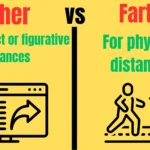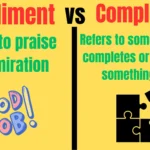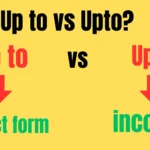Understanding how to correctly use “year old” and “years old” can greatly enhance clarity in your writing.
This guide will help you navigate the rules for these age descriptions and ensure that your writing is both professional and precise.
Basic Rules for ‘Year Old’ and ‘Years Old’
When discussing age in writing, it’s crucial to use “year old” and “years old” correctly. Here’s a quick breakdown:
- Year Old: This phrase is used as a compound adjective before a noun. For example, “a five-year-old child.” It describes the age of something or someone in a more specific, adjectival form.
- Years Old: This phrase is used after the noun and is a more straightforward way to describe age. For instance, “The child is five years old.” It’s often used in more descriptive contexts where the adjective form isn’t needed.
Examples:
- Correct: “The six-year-old dog is very friendly.”
- Correct: “The dog is six years old.”
- Incorrect: “The six years-old dog is very friendly.”
Understanding when to use each form will help you maintain clarity and consistency in your writing.
The Role of Hyphens in Age Descriptions
Hyphens are essential in age descriptions when using “year old” as an adjective. They connect the words to form a compound adjective, which makes the description clearer and more precise.
When to Hyphenate ‘Year Old’
Use hyphens when “year old” is used to describe a noun:
- Example: “She has a three-year-old son.”
- Explanation: Here, “three-year-old” functions as a compound adjective describing “son.”
Hyphens are not needed if “years old” follows the noun:
- Example: “Her son is three years old.”
- Explanation: The phrase “three years old” is a predicate adjective, so no hyphens are required.
Instances Where Hyphenation is Not Needed
Hyphens are unnecessary in the following cases:
- When “years old” is used after a noun.
- Example: “The cat is seven years old.”
- When the age is part of a more complex noun phrase.
- Example: “He bought a five years old car.”
In these cases, the adjective form with hyphens isn’t appropriate.
Common Mistakes and How to Avoid Them
Here are some frequent errors people make with “year old” and “years old,” and tips on how to avoid them:
- Using Hyphens Incorrectly: Avoid hyphenating “years old” as it is not a compound adjective.
- Incorrect: “She is a five-years-old student.”
- Correct: “She is a five-year-old student.”
- Confusing the Placement: Ensure that “year old” is used before a noun, and “years old” is used after.
- Incorrect: “The baby is one-year-old.”
- Correct: “The baby is one year old.”
- Overcomplicating Descriptions: Keep age descriptions simple and clear. Overcomplicating can confuse readers.
- Example: Instead of “The ten-years-old dog,” use “The ten-year-old dog.”
Quick Tip: Double-check the context to decide whether to use hyphens and ensure the placement of age descriptions aligns with standard practices.
Applying the Rules in Everyday Writing
Implementing these rules in everyday writing helps maintain professionalism and clarity. Here are practical applications:
- Academic Writing: Use “year old” as a compound adjective before a noun for precision.
- Example: “The study focused on ten-year-old students.”
- Professional Writing: Ensure that age descriptions are clear and correctly punctuated.
- Example: “The company’s product is three years old.”
- Casual Writing: Maintain consistency even in informal contexts.
- Example: “My dog is four years old.”
Examples in Different Contexts
| Context | Correct Usage | Example |
| Academic | Compound adjective before a noun | “The research involved eight-year-old children.” |
| Professional | Age after the noun | “The machine is five years old.” |
| Casual | Consistent and clear | “My cat is twelve years old.” |
Using Ages as Adjectives Before a Noun
When using ages as adjectives before a noun, always hyphenate “year old.” This helps in forming a compound adjective that describes the noun more precisely.
- Example: “A two-year-old child.”
- Explanation: The hyphens connect “two,” “year,” and “old” to describe “child.”
Comparison:
| Description | Adjective Form | Predicate Form |
| A child who is two years old | Two-year-old child | The child is two years old. |
Correct Placement of Age After a Noun
When placing age after a noun, use “years old” without hyphens. This form is used for straightforward age descriptions and is less formal.
- Example: “The child is eight years old.”
- Explanation: “Eight years old” follows the noun and doesn’t require hyphens.
Comparison:
| Description | Adjective Form | Predicate Form |
| A child who is eight years old | Eight-year-old child | The child is eight years old. |
Additional Tips and Tricks for Age-Related Grammar
To enhance your writing further, consider these additional tips:
- Consistency: Maintain consistency in age descriptions throughout your document.
- Clarity: Use age descriptions that clearly convey the intended meaning without ambiguity.
- Proofreading: Always proofread for correct hyphenation and placement.
Extra Tips:
- Avoid Redundancy: Do not repeat “years old” unnecessarily.
- Example: “He is a fifteen-year-old student who is fifteen years old.” (Redundant)
- Be Precise: Use specific age descriptions to provide clear information.
Conclusion
Mastering the correct usage of “year old” and “years old” is essential for clear and professional writing. By following these guidelines, you can ensure your age descriptions are accurate and effective. Whether you’re writing academically, professionally, or casually, understanding these rules will enhance your communication and help you avoid common pitfalls.
For further reading and examples, you might find these resources helpful:
- Grammar Girl: Age Descriptions
- Merriam-Webster Dictionary: Year Old
By implementing these rules and tips, you’ll be well on your way to mastering age descriptions in your writing.

As an experienced English teacher, I’m Jessica Thompson, here to make grammar and vocabulary simple and fun. Join me on TalkSpeaker as we explore the language together, one lesson at a time!



